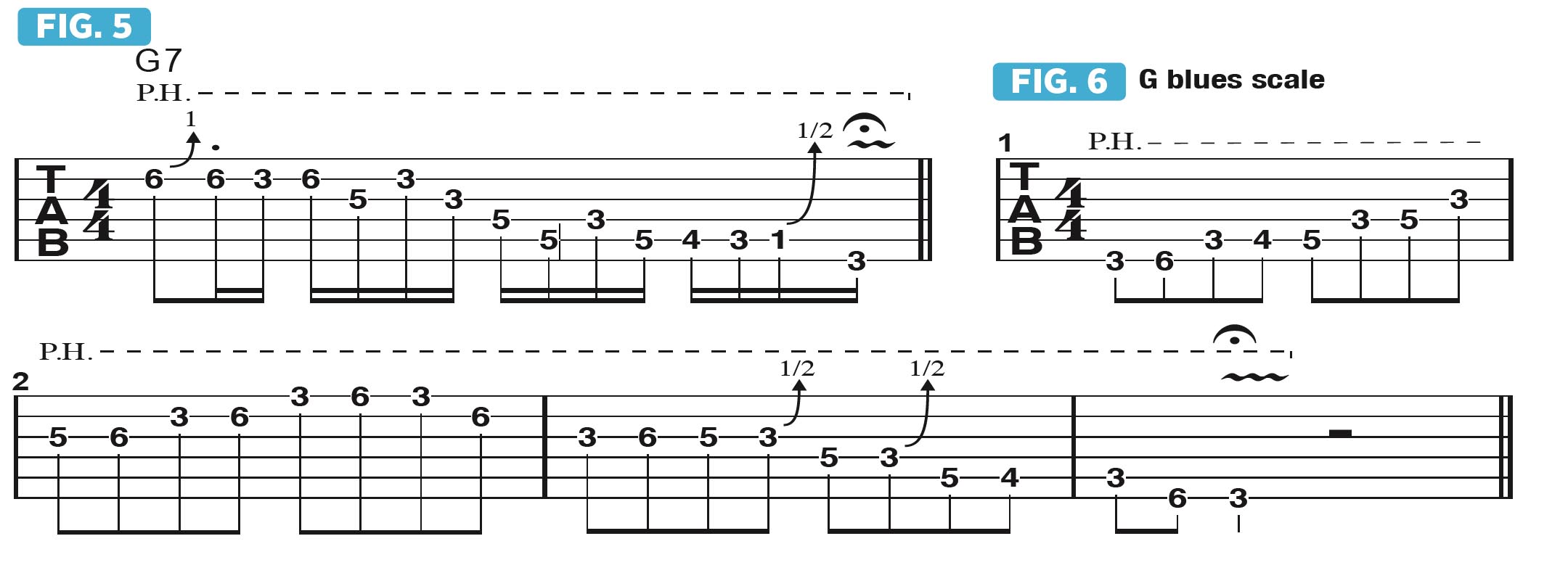
Hey Folks. This month’s column is dedicated to a technique I love to use when playing a Telecaster-style guitar set on the bridge pickup, especially with a little bit of distortion. The technique is a type of artificial harmonic known as a pinch harmonic, or “whistler,” as the late, great Danny Gatton used to call it.
When you pick the string just right, a higher pitch other than the fretted note is sounded. This higher pitch is an overtone, or harmonic, that stems from the overtone series related to that note. Indicated by the abbreviation P.H., the pinch harmonic is a fantastic expressive device to use when playing a solo or melody.
Much beloved by rock, blues, country and metal guitarists alike, the pinch harmonic has been used to great effect by such legendary axemen as Roy Buchanan, Billy Gibbons, Eddie Van Halen and Zakk Wylde.
As the term implies, a pinch harmonic is sounded when one essentially “pinches down” on a string when picking it with a downstroke. Depending upon where along the length of the string you pick, different harmonics can be sounded at specific points.
Generally speaking, the notes in the overtone series correspond to either the major 3rd, the 5th, the flatted 7th, the root note an octave higher or the 9th, although dedicated manipulation can yield other tones, which, when heard together with the fretted note, can yield some truly bizarre sounds. Danny coined the term “whistler” because, when the string is picked just right, the pinch harmonic produced is super high, often three octaves above that of the fretted note.
The way I and most guitarists produce a pinch harmonic is to grasp the pick close to its pointed tip with your thumb and index finger. You then pick a downstroke, intentionally allowing a bit of the fleshy part of the thumb to graze the string at the same time.
In Figure 1, I bend the D note on the G string’s 7th fret up to F, and while holding the bend, I repeatedly pick the string, using the thumb-grazing technique. As I pick along the length of the string, different harmonics will sound.
All the latest guitar news, interviews, lessons, reviews, deals and more, direct to your inbox!
You’ll need to seek them out by “hunting and pecking,” repeatedly down-picking the string in the area over the pickups, as you move along the string's length and listen for the harmonics.
A cool thing to do with a pinch harmonic is to rake into it, as exemplified in Figure 2. Drag the pick across the lower, fret-hand-muted strings before picking the note on the G string, getting equal parts thumb and pick into the attack.
In Figures 3 and 4, I demonstrate moving the pinch harmonic technique between the G and B strings.
A great exercise is to try to sound a pinch harmonic on every note of a scale or melody you're playing, as shown in Figures 5 and 6.
Another fun twist is to repeatedly pick a bent note while shaking, or vibrating, it with the fret hand and picking along the string at different points to produce varying harmonics. This technique is demonstrated in Figure 7.
Greg Koch is a large human who coaxes guitars into submission in a way that has left an indelible print on the psyches of many Earth dwellers. Visit GregKoch.com to check out his recordings, instructional materials, signature musical devices and colorful hats.







